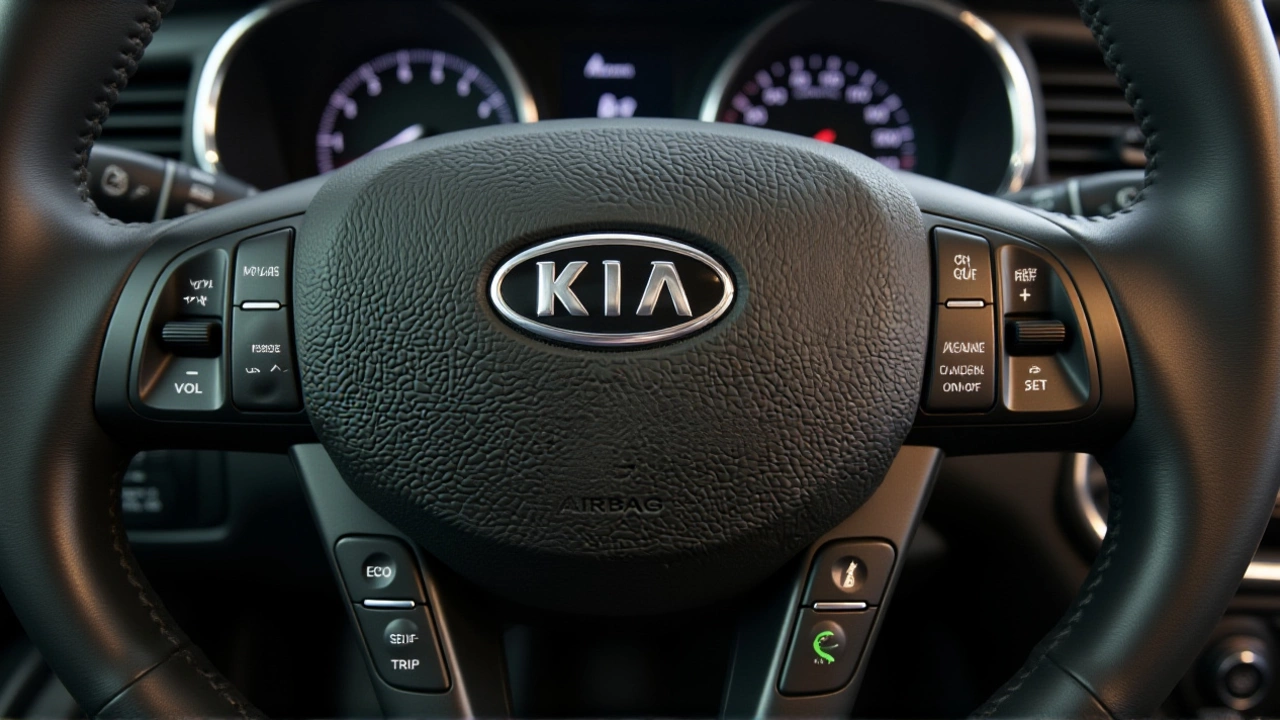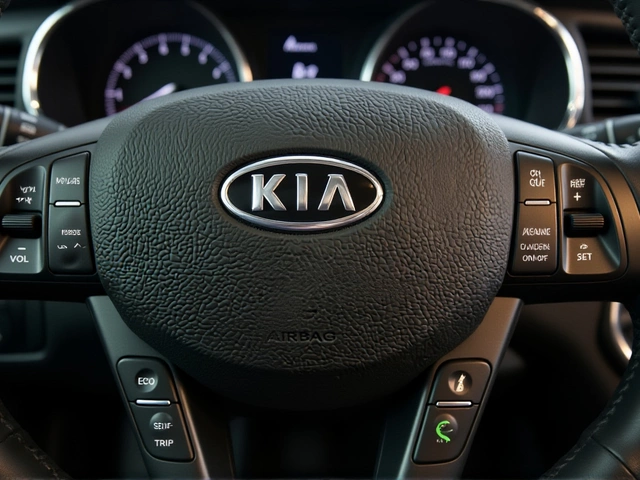When a Kia K5 slams into a barrier at 40 miles per hour, its fuel tank shouldn’t turn into a molten puddle. But according to federal investigators, that’s exactly what can happen in nearly a quarter-million of these sedans — and the risk isn’t theoretical. On October 26, 2023, the National Highway Traffic Safety Administration (NHTSA) announced a recall of 248,587 model year 2021–2023 Kia K5 sedans after discovering a manufacturing flaw that causes the plastic fuel tanks to deform and melt during moderate-frontal collisions. The defect, traced to a batch of polyethylene tanks made between October 21, 2020, and August 18, 2022, could leak fuel and ignite — even if the crash seems minor. No U.S. deaths have been linked to the issue yet, but the potential is chilling.
How the Defect Was Found
The NHTSA’s Office of Defects Investigation didn’t wait for casualties to act. Their probe began on February 3, 2023, after three dealers in Detroit, Atlanta, and Denver reported fuel tanks visibly warping after low-speed crashes under 25 mph. What followed was a months-long forensic review of Kia’s internal crash test data. By September 18, 2023, engineers confirmed what they feared: under impact forces, the fuel tank’s material — a type of high-density polyethylene — began softening at temperatures above 212°F, well below the heat generated in a collision. "Laboratory testing demonstrated thermal deformation that compromised structural integrity," said Chester W. Campbell, director of the ODI, in a report filed with the Department of Transportation.
Kia’s Response and the Recall Plan
Kia America Inc., headquartered in Irvine, California, moved quickly once the findings were shared. Scott Morikawa, the company’s Vice President of Quality Assurance, issued a statement calling the defect "unacceptable" and pledged full cooperation. "We are working expeditiously with NHTSA to implement this recall," he said. The fix? A complete fuel tank replacement — no patch, no sealant, no temporary fix. Each repair takes about 4.5 hours and uses parts manufactured exclusively at Kia’s Gwangmyeong Plant in South Korea. The cost? An estimated $149.2 million, absorbed entirely by Kia Corporation, the Seoul-based parent company led by CEO Ho Sung Song.
Who’s Affected — And Where
The recall spans all 50 U.S. states and territories. But the numbers aren’t evenly distributed. California leads with 38,217 affected vehicles, followed by Texas (29,845) and Florida (22,176). Owners will receive certified mail notices beginning December 15, 2023, instructing them to schedule a free appointment at any authorized Kia dealer. The NHTSA’s recall dashboard shows that as of November 24, 2025, just under 78.4% of vehicles — 194,892 — have been repaired through 765 U.S. service centers. That’s good progress, but not enough. NHTSA has set a hard deadline: 85% completion by March 31, 2024. If Kia misses it, the agency can issue a Special Order forcing quarterly progress reports — a public embarrassment that could further erode trust.

Why This Matters Beyond the Numbers
This isn’t just about a bad tank. It’s about a breakdown in safety assumptions. Federal Motor Vehicle Safety Standard 301 requires fuel systems to remain intact in crashes to prevent fires. The Consumers Union didn’t mince words: "This defect represents a fundamental failure in crashworthiness engineering," said Jake Fisher, the group’s director of automotive testing. "Kia’s design falls short of basic expectations. A fuel tank shouldn’t melt like butter in a hot car — it should protect lives."
For consumers, the fear isn’t just about the repair. It’s about what else might be hidden. Since January 2020, Kia Corporation has issued 12 recalls in the U.S., including a massive 380,000-vehicle recall in April 2022 for anti-lock brake failures. That history makes this latest recall feel less like an anomaly and more like a pattern.
What Happens Next?
By June 15, 2024, NHTSA must publish a mandatory 18-month effectiveness report. That’s when we’ll see whether the recall truly worked — not just in numbers repaired, but in lives protected. Meanwhile, owners who notice fuel leaks, unusual smells, or tank deformation before their letter arrives should call Kia’s 24-hour hotline at 1-800-333-4542. Representatives like Elena Rodriguez, Senior Customer Experience Manager in Irvine, are authorized to offer immediate guidance and loaner vehicles if needed.
Here’s the thing: carmakers aren’t required to recall vehicles unless NHTSA demands it. But this case proves regulators aren’t waiting for bodies to pile up. They’re using internal data, crash simulations, and dealer reports to catch flaws before they become tragedies. That’s progress. But for the owners of these K5s, it’s still a waiting game — one where the stakes couldn’t be higher.
Frequently Asked Questions
How do I know if my Kia K5 is part of this recall?
Check your VIN (Vehicle Identification Number) on the NHTSA recall website or call Kia’s hotline at 1-800-333-4542. Affected vehicles were manufactured between October 21, 2020, and August 18, 2022. You can also wait for a certified mail notice, which will arrive starting December 15, 2023. If you’re unsure, don’t wait — contact Kia directly.
Is it safe to drive my Kia K5 until I get the repair?
NHTSA says the risk is only present during or immediately after a frontal collision. If you drive carefully and avoid high-speed impacts, your vehicle is likely safe for now. But if you notice fuel odors, puddles under the car, or visible tank deformation, stop driving and call Kia immediately. The agency advises against prolonged use if you suspect damage.
Why did it take so long for Kia to act?
Kia didn’t initiate the recall voluntarily. NHTSA’s Office of Defects Investigation uncovered the issue after analyzing internal crash test data from March 2023 and reviewing 17 global incidents of tank deformation. Kia only confirmed the recall after being presented with the findings. This delay has raised questions about whether the company prioritized production timelines over safety transparency.
What if I already paid to fix my fuel tank?
Kia will reimburse owners who paid out-of-pocket for fuel tank repairs made between the discovery of the defect (March 2023) and the official recall notice (October 26, 2023). Keep all receipts and contact Kia’s customer service center to file a claim. Reimbursements typically take 4–6 weeks to process.
Could this affect my car’s resale value?
Yes. Vehicles with open recalls often see reduced trade-in values, even after repairs. Dealers may deduct $1,000–$2,500 from offers until the recall is documented as complete. To maximize value, get the repair done as soon as possible and keep proof of completion. The NHTSA recall database updates in real time, so buyers can verify repair status online.
Has Kia fixed this problem in newer models?
Yes. Starting with the 2024 model year, Kia redesigned the fuel tank’s internal structure and switched to a higher-temperature-resistant polymer. The new design has passed NHTSA’s full crash test protocol without deformation. The company says all 2024 and newer K5s are unaffected, and the fix has been rolled out across other models using the same platform, like the Hyundai Elantra.








Write a comment